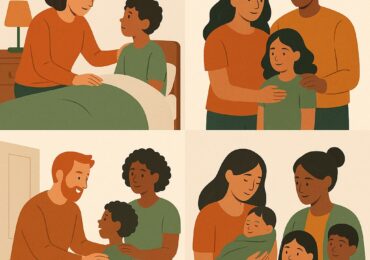Providing a safe, caring home for a child who cannot live with their own family is a profound act. But it is not a one-size-fits-all situation. A child’s unique circumstances dictate the kind of support they need, and to meet these varied needs, there are several distinct kinds of care arrangements. Each type of placement is structured to give the right help to a young person at a specific moment in their life. For anyone thinking about becoming a carer, knowing how these roles differ is the first important step.
Short-Term and Emergency Placements
A short-term placement might mean looking after a child for just one night, or it could last for many months, sometimes even a couple of years. The main goal is to give the child a sense of stability while social workers figure out the next steps, which ideally means a return to their family. Carers in this position provide all the day-to-day support and routine that helps a young person feel secure during a confusing and difficult time.
Emergency care is a form of this at its most reactive. When a child must be moved to safety with no warning, often because of a sudden family crisis, emergency carers get the call. They need to be ready to open their door to a child at any hour, providing instant reassurance and a warm bed.
Long-Term Care
Sometimes, it becomes clear that a child will not be able to go back to their birth family. This is where long-term care comes in. It means a child joins a family and stays with them, growing up as part of that household right through to adulthood. This gives a young person the consistency and emotional foundation of a permanent family life. While the local authority retains legal responsibility, the carers become the key adults in the child’s world, seeing them through school, hobbies, and all the ups and downs of growing up.
Offering Respite Support
Think of respite care as a planned, part-time commitment. It offers a short break, maybe a weekend a month or a week in the summer, to a child’s main carers or to birth parents who have a child with complex needs. This arrangement is incredibly helpful because it allows full-time care-givers to recharge their batteries, which in turn helps to make the child’s main home life more sustainable. It is a flexible role that provides a massive amount of support to the whole network around a child.
Specialist Placements for Siblings and Others
The bond between siblings is powerful, and every effort is made to keep them together when they are fostered with agencies like orangegrovefostercare.co.uk. This creates a huge demand for carers with enough room and energy to welcome a sibling group, allowing brothers and sisters to hold onto their most important family ties. Living together helps them feel less alone and provides a source of mutual support.
Another specialist role is the ‘parent and child’ placement. In this scenario, a carer’s home becomes a safe haven for a new young parent and their baby. The carer’s job is to guide and support the new parent as they learn to look after their child, helping them build the confidence to find their feet. This can be instrumental in keeping a new family unit together.
As you can see, there is not just one way to offer care. The range of placements ensures that the help given can be shaped around what an individual child truly needs. What links every type of placement, from an overnight stay to a lifelong family connection, is the focus on the child’s welfare. It is about giving them a safe space, consistency, and the chance to thrive when they need it most.
